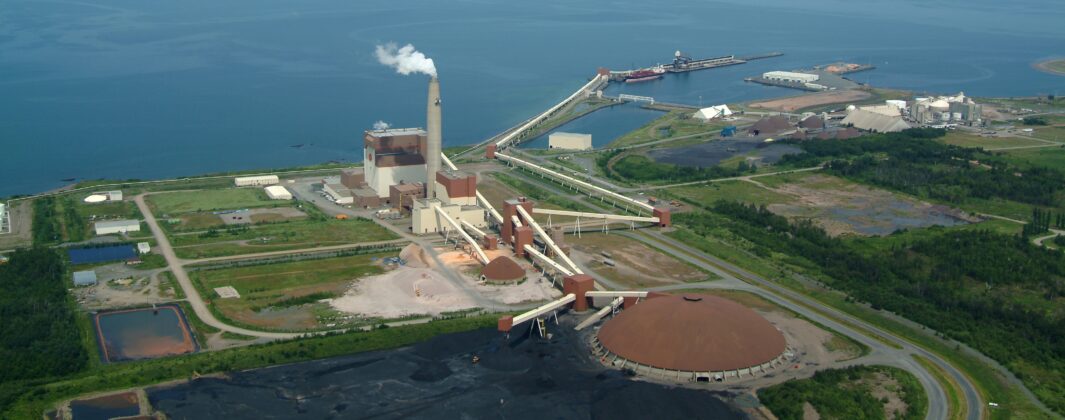In New Brunswick, NB Power’s plan to convert the Belledune coal-fired electric power station to black pellets presents an exciting opportunity for Canada. One that could strengthen the economics of the Canadian lumber sector, ensure better use of existing harvests and support rural communities across Atlantic Canada, while ensuring the power station complies with Canada’s 2030 coal phase-out regulation.
With the right federal support, all of Belledune’s fuel supply can come from within Canada — specifically, New Brunswick, Nova Scotia, Quebec and Ontario. This is “buy Canadian” in practice: Canadian fibre turned into Canadian pellets for Canadian electricity.
The Opportunity: Black Pellets
Thermally treated pellets, often referred to as “black pellets,” are emerging as one of the most promising renewable fuels in Canada’s energy transition. They mimic coal in energy production, are compatible with existing coal infrastructure, easier to pulverize than white pellets and can be stored outdoors without degrading.
NB Power chose black pellets as the most viable and cost-effective solution for Belledune — able to provide reliable baseload power, reduce emissions, and make efficient use of the fibre resources available in Eastern Canada.
Many coal plants around the world have already switched to white pellets or blends. Belledune is the largest proposed conversion from coal to black pellets. It will demonstrate the next step: using black pellets at full scale — showcasing Canada’s ability to lead in advanced biomass technologies while supporting domestic wood pellet manufacturing. Once fully converted, Belledune will consume around 300,000 to 500,000 tonnes of black pellets per year.
However, black pellets are currently not produced at a commercial scale in Canada. Wood pellet manufacturers require financial support to convert facilities. If three Canadian facilities were converted, 600,000 tonnes of black pellets could be produced annually, providing Belledune’s needs with flexibility and resilience.
Canadian Wood Pellet Sector’s Role
The Canadian pellet sector is needed for Belledune to succeed. WPAC members bring access to fibre, existing facilities that can be modified to meet market needs, proven track records and technical expertise.
WPAC, our members and NB Power are working closely together and are committed to strengthening our collaboration. We all understand that most of the capital investment must come upstream—by producers installing new thermal processing lines and steam-generation systems at their facilities, along with the necessary engineering, permitting and supply chain upgrades.
WPAC’s role is to help producers explore ways to reduce risk—by working with them to assess the business case, share knowledge on equipment and processes, and explore opportunities together. This includes helping producers evaluate options by coordinating information on equipment, providing education on the different thermal treatment processes, and facilitating site visits to facilities already using such technology—so producers can make well-informed decisions.
Building confidence, mobilizing investment and aligning supply chains will take time. NB Power’s patience and partnership will be essential as producers work through these steps. Together, we can ensure the conversion progresses in a way that is both reliable and sustainable.
Government of Canada Support is Required
For Belledune to succeed, federal participation is essential. Currently, federal clean energy programs support utilities but not fuel producers. This gap must be addressed.
NB Power’s conversion requires relatively modest plant modifications and has financial support from the Federal government.
To convert to black pellet production, pellet facilities will need to invest about $30 million each in new thermal processing and steam-generation capacity to produce roughly 200,000 tonnes of black pellets per plant per year. Sites are not yet chosen, and investors must be convinced to commit.
The solution is a mix of loan guarantees, production credits, investment tax credits and direct grants or matching contributions from the Canadian government. These tools will enable Canadian producers to build the required capacity; without them, the project cannot move forward.
Without the right federal support, private capital alone will not be sufficient.
A Model for Canada
The Belledune conversion will be a huge but achievable project. And it will mean more than just decarbonizing one generating station. It will serve as a model project—a blueprint for other Canadian coal-fired stations facing the 2030 phase-out. It will also demonstrate that Canada’s commitments under the coal phase-out regulation, the Clean Electricity Regulations and the Powering Past Coal Alliance are being put into practice.
Belledune is a national opportunity. It is good for Canada, good for New Brunswick, and good for the wood pellet sector. It will strengthen the forest industry, grow the bioeconomy, cut greenhouse gas emissions and deliver renewable energy at scale. Developing a Canadian black pellet industry to supply Belledune will lay the foundation for decarbonization in other sectors, including steel, cement and industrial boilers, while opening future domestic and export opportunities. Most importantly, it will show that Canada can, and will, turn its climate commitments into reality.
Gordon Murray is the Executive Director of the Wood Pellet Association of Canada. This article was originally published in Canadian Biomass.

